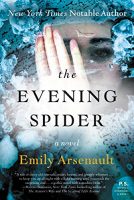A Loaded Gun: Emily Dickinson for the 21st Century
An endnote to his novel The Secret Life of Emily Dickinson, Charyn’s A Loaded Gun further supports his case for a fresh vision of America’s most studied, yet persistently enigmatic poet. According to Charyn, we don’t “get” Dickinson – nobody does. Not the first beat of that drum in literary criticism. But his Emily is an attractive notion. Beneath the metaphysical recluse, he paints a highly sexual, almost predatory domestic goddess, whose writings testify to a rebellious, powerfully manipulative force in the lives of those around her.
A celebrated master of literary voice, Charyn inhabits Dickinson from the first page, splicing excerpts from her letters and poems with critical quotations, channeling her style, and kneading her metaphors. He draws from the vision of select contemporaries, as well as a broad range of later expressionists who claim her influence. From elemental artist Joseph Cornell, to scholar Marta L. Werner, even ballerina Allegra Kent, Charyn discloses his personal nexus to each, and weaves subjective, sometimes improbable comparisons into an interpretive tapestry which feels quite genuine. If Dickinson would fail to see herself in the finished product, she certainly would recognize his method.
The book makes for a gratifying nut of poetic analysis, historical psychology, and the passionate homage of a lifelong disciple of the beloved Belle of Amherst.
Review first published in Historical Novel Review


